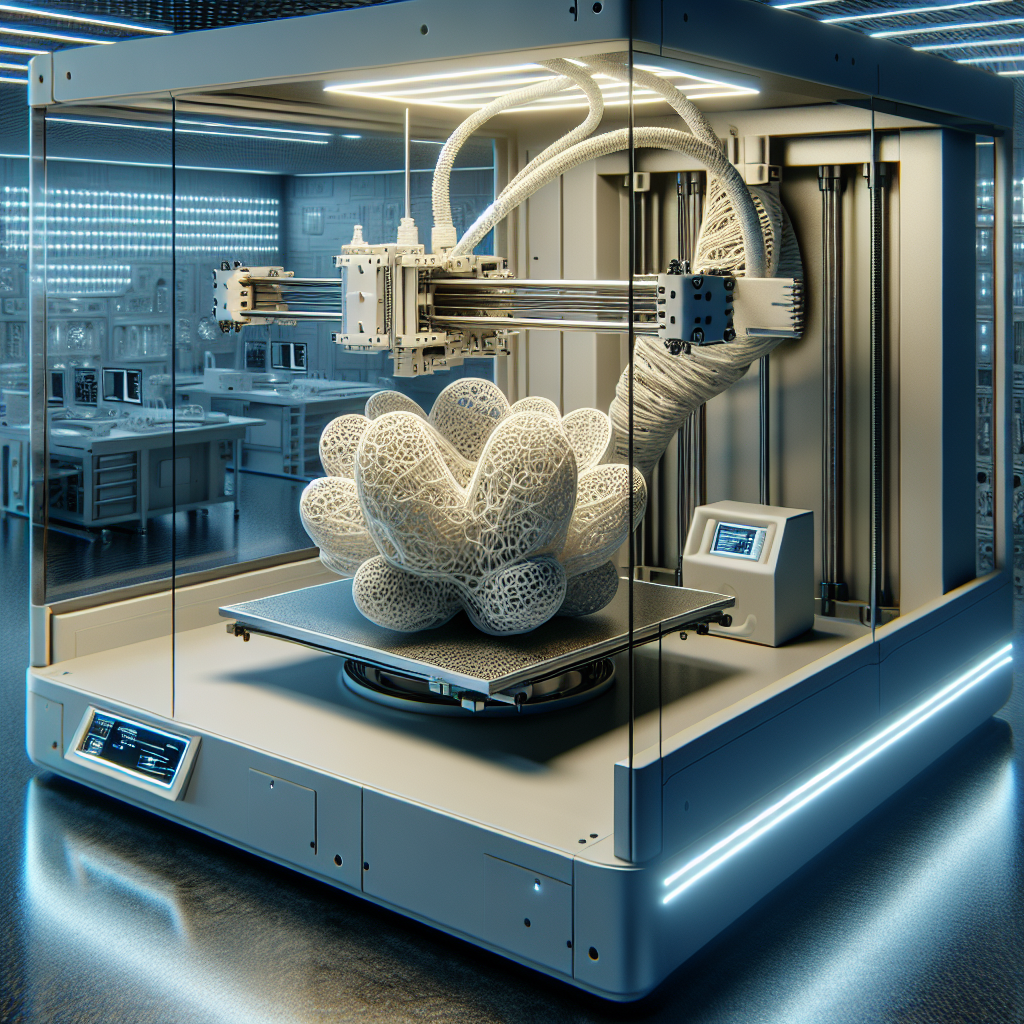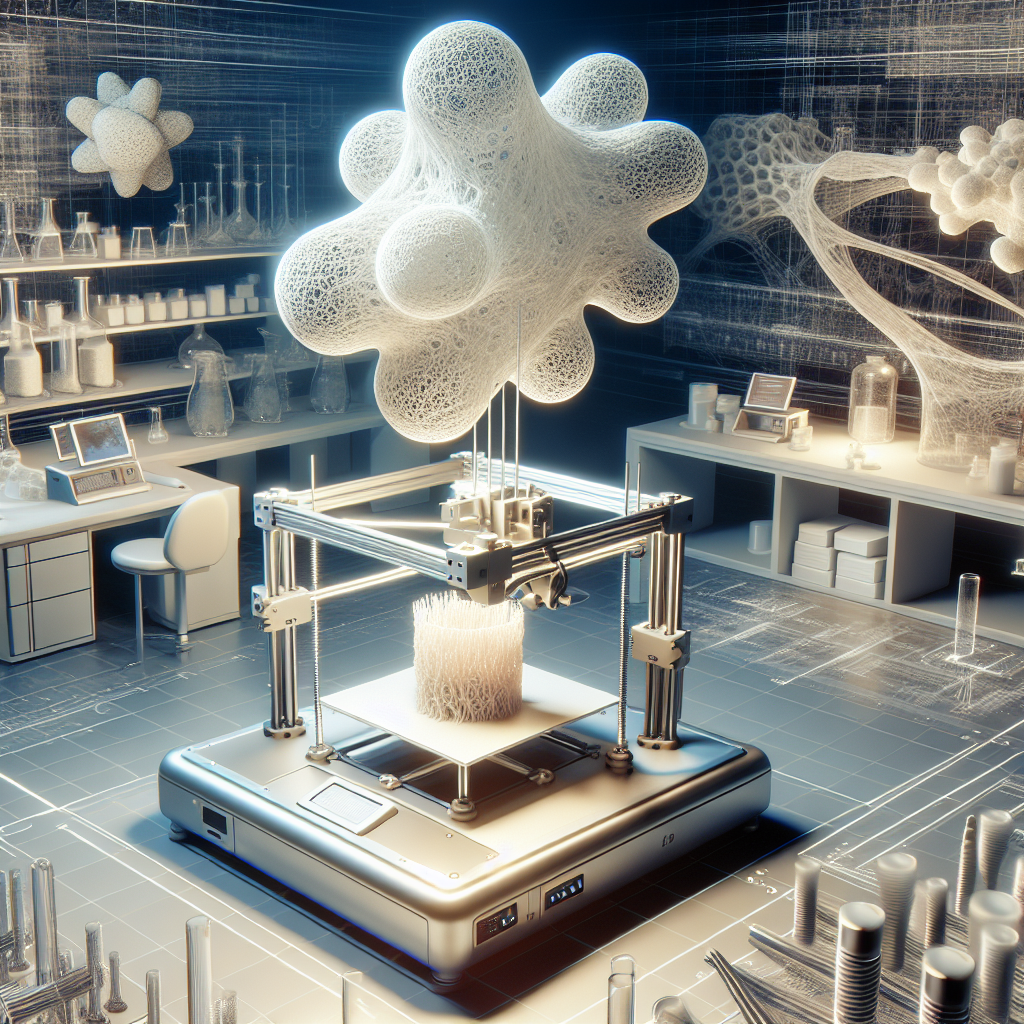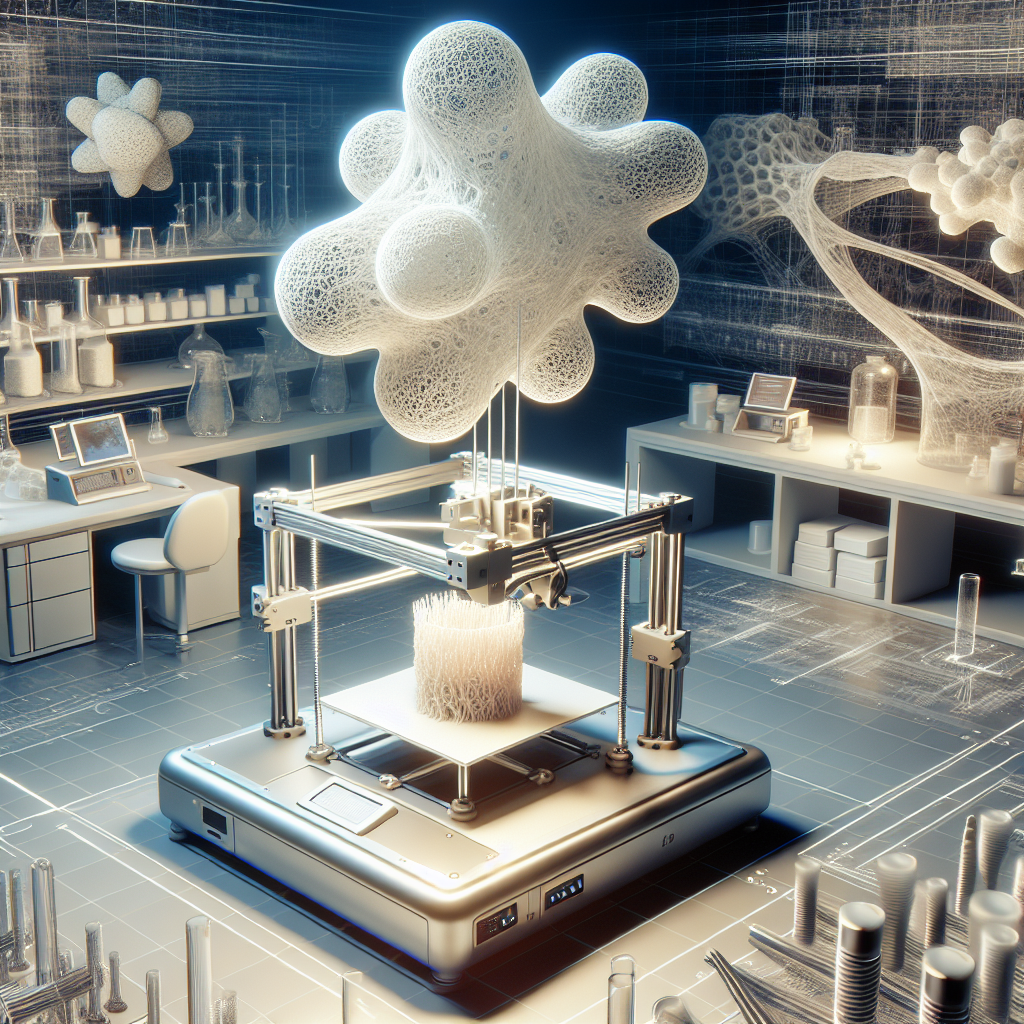As an adept individual in the field of technology and biological innovation, it is critical for you to stay updated about the rising trends that are shaping the future. Indeed, two groundbreaking technologies are converging with remarkable possibilities: mycelium and 3D printing. The article, “The Future of mycelium in 3D printing“, unpacks this compelling subject, exploring the symbiosis between a natural material like mycelium, the vegetative part of a fungus consisting of a network of fine white filaments, and the technological prowess of 3D printing. These advances together hold vast potential for sustainable development and green technology, offering an array of exciting implications in diverse industries such as architecture, medicine, and textiles, to name a few.

Understanding Mycelium
Mycelium is primarily understood as the root structure of fungi. This vegetative part of a fungus is often found below the ground and encompasses a complex network of hyphae, which serve as nature’s own version of the internet, facilitating communication and nutrient transport between different organisms.
What is Mycelium?
To put it simply, mycelium is the underlying infrastructure of our ecosystem. The fungus kingdom, in which mycelium exists, is diverse and essential to our planet. With millions of species worldwide, fungi act as decomposers that break down organic material and recycle nutrients back into the ecosystem.
Exploring the properties of Mycelium
The properties of mycelium have intrigued scientists and researchers for years due to their unique characteristics. Mycelium exhibits a fibrous nature and is exceptionally durable and resilient, much more than cotton or linen. Moreover, it has excellent insulation properties, offering both sound and temperature buffering capabilities.
The significance of Mycelium in the natural world
Mycelium plays a vital role in the health of ecosystems across the globe. It connects different organisms, enabling them to communicate and exchange nutrients. In forest ecosystems, mycelium can even link trees of different species, creating a ‘Wood Wide Web’ and ensuring the wellbeing of its community.
Emergence of Mycelium in 3D Printing
The phenomenon of 3D printing has revolutionized manufacturing by providing unparalleled flexibility in design, material use, and production speed. Recently, scientists and technologists have turned their attention towards mycelium as a unique, eco-friendly material for 3D printing.
Initial experiments with Mycelium in 3D Printing
The initial involvement of mycelium in 3D printing was encouraged by their unique eco-friendly properties. Researchers began to experiment with mycelium as feedstock, creating prototypes of various designs. These early experiments showcased the plausibility of mycelium in 3D printing, paving the way for more intricate designs and applications.
The potential identified in Mycelium for 3D Printing
In terms of potential, mycelium proves to be highly versatile. It grows quickly and can bind a variety of substances together, making it an excellent bio-adhesive. Its filamentous structure ensures the structural integrity essential for 3D printing. Furthermore, mycelium could be a game-changer in terms of sustainability and cost-effectiveness in the manufacturing industry.
Successful examples of Mycelium-based 3D Printing
Successful prototypes and products have been created using mycelium in 3D printing. Examples include furniture, packaging materials, building materials, and even wearables. These successful implementations showcase the immense potential of mycelium in the industry.
Mycelium as a Sustainable Material
Mycelium brings much-needed sustainability to the table, a characteristic essential in an era of increased environmental awareness and desire for eco-friendliness.
Understanding the sustainability factors of Mycelium
Mycelium is a naturally occurring bio-material that does not require intensive resources to cultivate. It grows rapidly and can be composted after use, reducing landfill waste. Furthermore, no harmful chemicals or toxins are released during its growth or decomposition, enhancing its eco-friendliness.
Comparison with traditional materials in 3D Printing
When compared with conventional 3D printing materials like plastic, mycelium can be a greener and more sustainable choice. While plastics rely heavily on fossil fuels for their production and lead to harmful emissions, mycelium can be grown almost anywhere with minimal resources. Furthermore, unlike plastic, mycelium can decompose harmlessly back into nature after use.
Environmental benefits of using Mycelium
By using mycelium in 3D printing, one can help reduce the detrimental environmental impacts associated with conventional manufacturing methods. Lower emissions, reduced dependency on oil-based products, and decreased waste contribute to the green rating of mycelium.

Process of Mycelium 3D Printing
Given the novelty of the material, the mycelium 3D printing process is a continuous research and development endeavor. It requires a series of steps that differ from conventional 3D printing methods.
Exploring the printing process with Mycelium
The printing process with mycelium starts with the cultivation of mycelium bricks, which grow within a week in a mold. These bricks are then dried to halt growth and processed into filaments or combined with other materials. After this, the material is ready to be used as a feedstock for 3D printing.
Preparation of Mycelium for 3D Printing
Preparing mycelium for 3D printing involves the careful nurture and growth of the fungi. The mycelium is typically grown in a controlled environment under specific temperature and humidity conditions. Once it reaches the desired size and density, it is then processed further to create the filaments needed for 3D printing.
Challenges in Mycelium 3D Printing process
The 3D printing process with mycelium presents its own set of challenges. These include ensuring uniform growth, preventing contamination, and achieving a consistent filament thickness. Furthermore, high temperatures commonly used in 3D printing can often be detrimental to mycelium material.
Potential Applications of Mycelium in 3D Printing
The implementation of mycelium in 3D printing goes beyond just research and development. Its characteristics have found potential use cases in multiple industries, from construction to fashion, medicine, and food and beverages.
Architectural and Construction Use
In construction, mycelium could revolutionize the way buildings are constructed. It offers a cost-effective, sustainable, and highly durable alternative to traditional building materials. Mycelium panels and bricks are already being used in experimental designs.
Medical and Healthcare Industry
In the medical field, mycelium has promising applications in the creation of surgical implants and wound dressings. Its biocompatibility, coupled with its natural antibiotic properties, offer a significant advantage over traditional materials.
Fashion and Apparel Industry
In the world of fashion, designers are using mycelium to create sustainable and biodegradable clothing and accessories. By 3D printing with mycelium, the fashion industry can move towards a more ethical and environmentally friendly approach.
Food and Beverage Industry
The application of mycelium in the food and beverage industry is also being explored. Mycelium-based packaging and even edible mycelium products are possibilities offered by 3D printing technologies.
Economic Perspective of Mycelium in 3D Printing
The emergence of mycelium in 3D printing also carries significant economic implications. The potential market and cost-effectiveness of this new green technology are quite promising.
Cost-effectiveness of Using Mycelium
Mycelium is easy and relatively cheap to grow. It does not require expensive equipment or resources, and hence, products made from it could be sold at lower prices than their traditional counterparts.
Market potential for Mycelium-based products
Given the increasing consumer interest in sustainable and eco-friendly products, there is a sizeable potential market for mycelium-based products. Current sectors actively exploring the use of mycelium include construction, healthcare, fashion, and food industries.
Investment opportunities in Mycelium 3D Printing
Given the costs, challenges, and potential, there are significant investment opportunities related to mycelium 3D printing. It is an area that promises innovative solutions to significant environmental issues and offers significant returns.
Legal and Ethical Considerations of Using Mycelium
A new technology often brings with it a range of legal and ethical considerations. The use of mycelium in 3D printing is no exception.
Understanding the regulatory landscape
As with any new material, understanding the regulatory landscape is crucial to ensuring legality and safety. Given mycelium’s biological nature, issues of biosecurity and potential health risks need to be carefully addressed.
Ethical aspects of using a biological material
Using a living organism as a material raises ethical questions about its cultivation, use, and disposal. However, mycelium’s renewable and compostable nature, along with its potential to replace harmful materials, aligns well with ethical considerations.
Patent and Intellectual Property considerations
Creating processes and products using mycelium raises considerations regarding patents and intellectual property. As researchers and companies develop new innovations, issues related to patenting biological materials and the rights associated with these processes will inevitably arise.
Future Developments with Mycelium in 3D Printing
While there are significant advancements at present, future developments in mycelium 3D printing will likely lead to more widespread use of this material.
Predicted advancements for Mycelium in 3D Printing
Scientific and technological advancements are expected to address the current challenges of mycelium 3D printing, leading to better print quality, speed, and range of applications. With more research and experimentation, we can expect to witness an array of innovative products and applications in diverse industries.
Potential hurdles for progress
Potential obstacles in mycelium 3D printing include addressing the challenges in the printing process, reception by consumers, and legal and ethical considerations. Advancements are unlikely to be smooth sailing, but the potential benefits can outweigh the potential drawbacks.
The influence of technological innovation on Mycelium 3D Printing
As technological advancements continue to shape the 3D printing industry, there are high expectations for innovations in mycelium 3D printing. Advancements in this field could not only address the current challenges but open doors to previously inconceivable applications.
Academic and Industry Perspectives on Mycelium in 3D Printing
Academic and industry perspectives will play a significant role in the development, acceptance, and implementation of mycelium in 3D printing.
Research findings on Mycelium in 3D Printing
Various academic studies substantiate mycelium’s potential as a revolutionary material in 3D printing. Research indicates that it is a sustainable, cost-effective, and versatile material, suggesting its viability in multiple sectors.
Industry outlook on the use of Mycelium
Industries vested in 3D printing technology have shown great interest in mycelium. Its sustainable nature, cost-effectiveness, and potential applications make mycelium a promising alternative to conventional materials.
Opportunities for collaboration between academia and industry
Given the early stages of mycelium 3D printing, there are ample opportunities for collaboration between academic institutions and industry. Both have a vested interest in examining this novel material and unlocking its full potential.
Conclusion: The Implications of Mycelium in 3D Printing
In conclusion, the emergence of mycelium in 3D printing has the potential to revolutionize material science and manufacturing processes.
Understanding the broad implications
Mycelium’s sustainable nature, coupled with its versatility and cost-effectiveness, make it a promising alternative to traditional materials. Its use in 3D printing could have far-reaching implications, from reducing environmental pollution to revolutionizing numerous industries.
The potential impact on various sectors and industries
If its potential is harnessed correctly, mycelium 3D printing could disrupt sectors such as construction, healthcare, fashion, and even the food and beverage industries. All these sectors stand to gain from the sustainability, cost-effectiveness, and three-dimensional configurations that mycelium 3D printing offers.
Final thoughts on the future of Mycelium in 3D Printing
With its immense potential and countless benefits, the future of mycelium in 3D printing is promising. As research, technology, and awareness around sustainable practices continue to evolve, mycelium could very well become a significant contributor to shaping a sustainable future.
